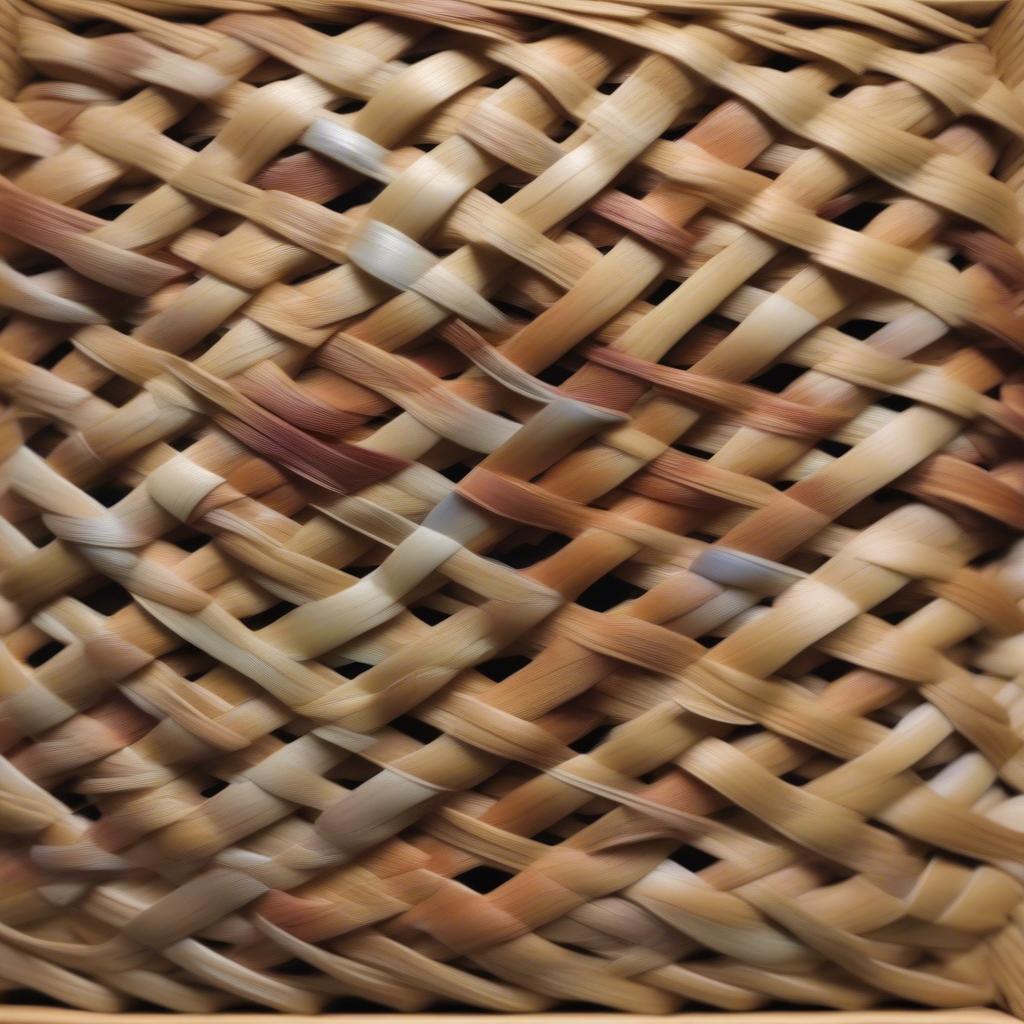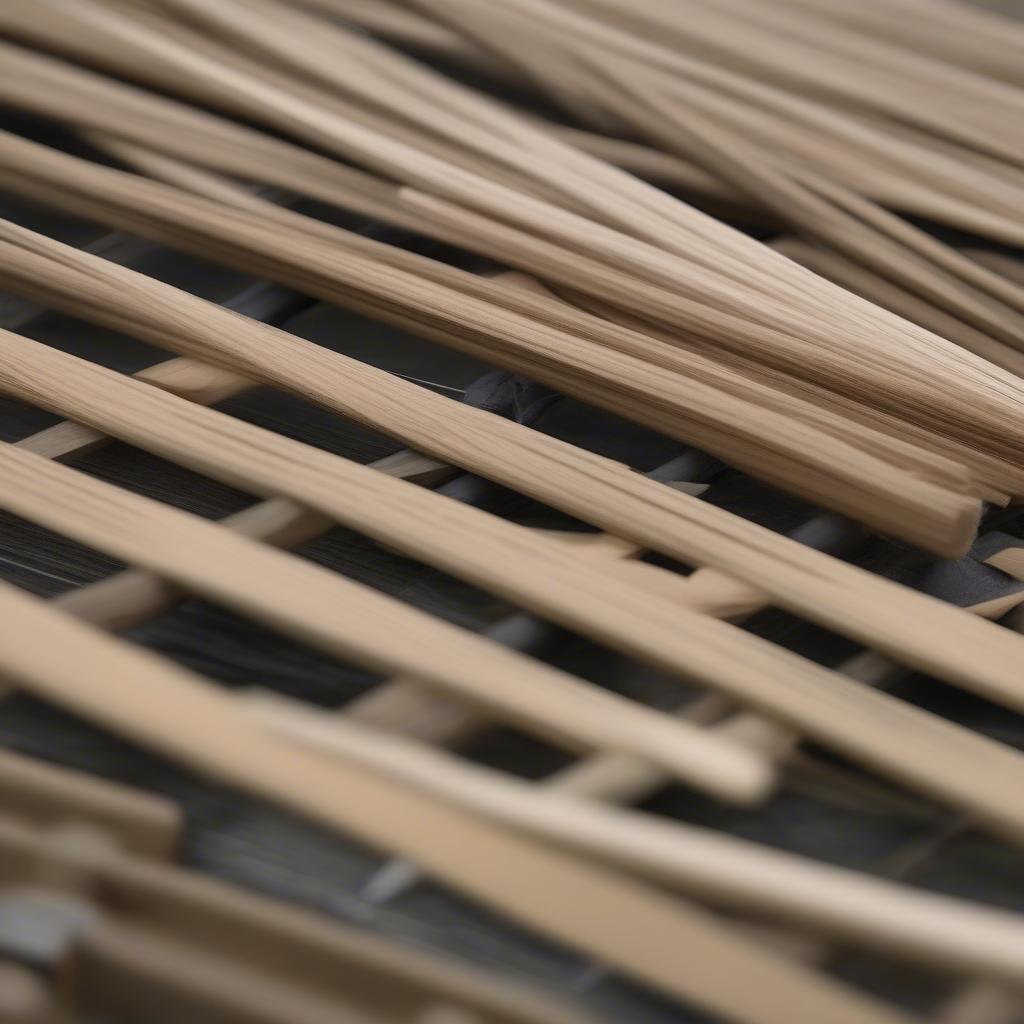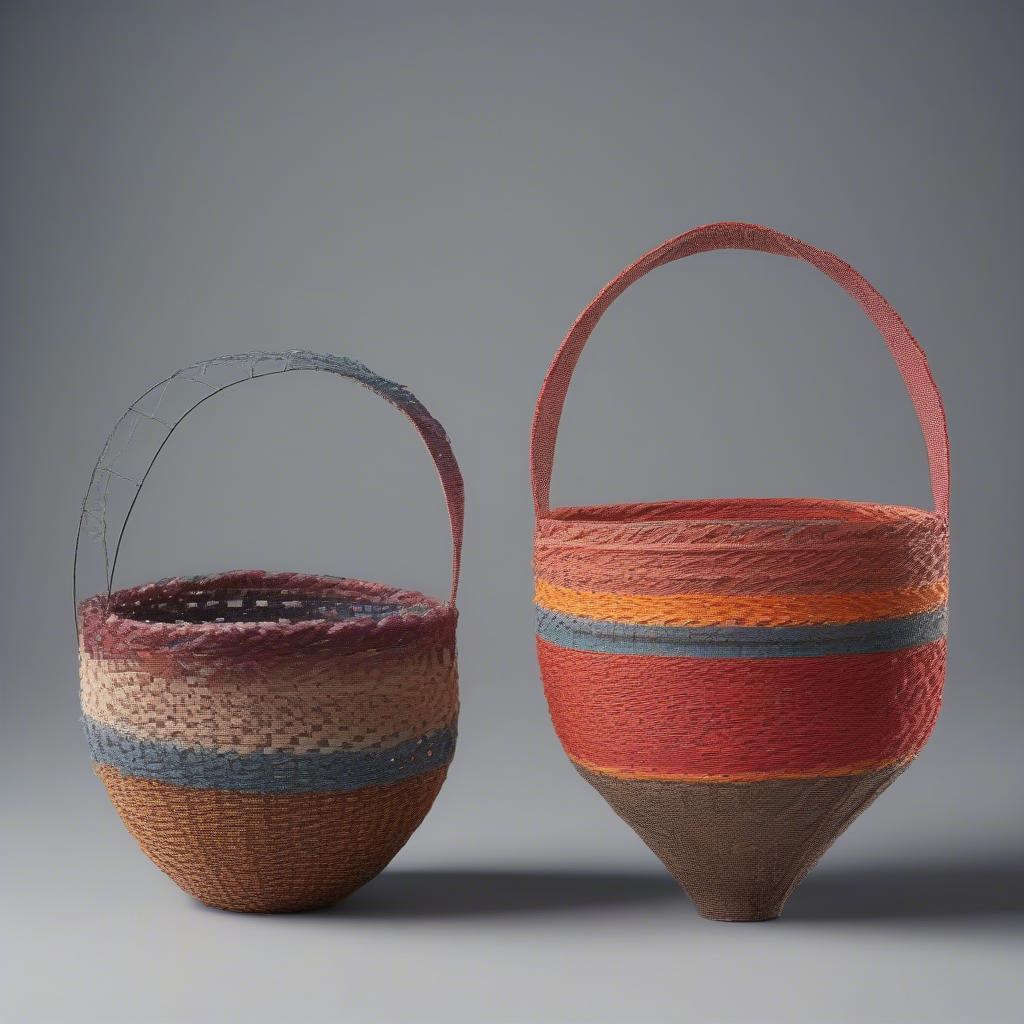Basket Weaving
Mastering the Matrix Basket Weave Method
The Matrix Basket Weave Method offers a structured and visually appealing approach to basketry. It allows for intricate patterns and a sturdy construction, making it a favorite amongst both novice and experienced basket weavers. This comprehensive guide will delve into the intricacies of the matrix basket weave method, providing you with the knowledge and skills needed to create your own woven masterpieces.  Example of a matrix basket weave
Example of a matrix basket weave
Understanding the Basics of the Matrix Basket Weave Method
The matrix basket weave method, sometimes referred to as the “checkerboard weave,” involves interlacing weavers in a precise over-under sequence to create a distinct grid-like pattern. This method is highly versatile, adaptable to various materials like rattan, wicker, and even paper. It’s a foundation for numerous more complex weaves, making it an essential skill for any aspiring basket maker. The regularity of the weave creates a basket that is both beautiful and strong.
What sets the matrix weave apart is its structural integrity. The interwoven nature of the weavers distributes tension evenly, resulting in a basket capable of holding its shape and withstanding wear and tear. It’s perfect for creating functional baskets for storage or decorative pieces to enhance your home.
One of the first things to master is preparing your materials. Whether you’re working with basket weave method matrix rattan or wicker, ensuring uniform size and pliability is crucial for achieving a neat and consistent weave. Soaking the materials before weaving helps make them more flexible and easier to manipulate.
Step-by-Step Guide to the Matrix Basket Weave
Preparing Your Materials
- Soaking: Submerge your chosen weaving material (rattan, wicker, etc.) in warm water for at least 30 minutes to enhance flexibility.
- Sorting: Separate the weavers by size and thickness for a consistent weave.
- Base Creation: Form a sturdy base using a circular or square frame, depending on your desired basket shape.
Weaving the Matrix
- Establishing the Foundation: Begin by weaving a row of over-under weaves using the desired number of stakes (vertical elements).
 Setting up the stakes for the matrix weave
Setting up the stakes for the matrix weave - Introducing the Weaver: Introduce a new weaver (horizontal element) perpendicular to the stakes.
- Over-Under Sequence: Weave the new weaver over the first stake, under the second, over the third, and so on, maintaining the alternating pattern.
- Repeating the Pattern: Continue introducing new weavers, maintaining the over-under sequence. Each row will mirror the previous one, creating the characteristic checkerboard pattern.
- Securing the Weave: As you progress, use a mallet or other tool to gently tap down each row of weaving, ensuring a tight and compact structure.
This structured approach allows for easy adjustments and adaptations. Want a tighter weave? Simply use thinner weavers or increase the number of stakes.
Tips for a Successful Matrix Basket Weave
- Maintain even tension throughout the weaving process to prevent warping.
- Use a damp cloth to wipe down your weavers periodically to maintain their flexibility.
- Experiment with different materials and color combinations to create unique designs.
“The beauty of the matrix basket weave lies in its simplicity and versatility,” says renowned basket weaver, Anya Petrova. “It’s a fundamental technique that opens doors to a world of creative possibilities.” basket weave method matrix official name
Exploring Variations of the Matrix Basket Weave
While the basic matrix weave is visually appealing, there are many variations to explore:
- Twilled Matrix: This variation introduces a diagonal element by shifting the over-under pattern by one stake with each new row. basket weave method of matrix alternate name
- Double Matrix: This involves using two weavers at a time, creating a thicker and more robust weave.
“Don’t be afraid to experiment and push the boundaries of the matrix weave,” advises expert basket maker, James Weaver. “The possibilities are endless.”
Conclusion
The matrix basket weave method offers a fantastic starting point for anyone interested in the art of basketry. Its structured approach, combined with its adaptability, allows for both beautiful and functional creations. So gather your materials, follow the steps outlined in this guide, and embark on your journey to mastering the [keyword] matrix basket weave method!  A completed matrix weave basket
A completed matrix weave basket
FAQ
- What materials are best for the matrix weave? Rattan, wicker, and even paper can be used.
- How do I achieve a tighter weave? Use thinner weavers or increase the number of stakes.
- What is the difference between a regular matrix and a twilled matrix? A twilled matrix introduces a diagonal element by shifting the over-under pattern.
- Can I use the matrix weave for large baskets? Yes, the matrix weave is sturdy enough for large baskets.
- Where can I find more information on basket weaving techniques? Check out our article on basket weave determinant.
- What is the official name of this method? Sometimes it’s called the checkerboard weave, you can also learn more about the basket weave method to find a determinant.
- Is it difficult to learn the matrix weave method? No, it’s a beginner-friendly technique.
Need assistance with your basket weaving endeavors? Reach out to us at Hanoi, Vietnam or Tech Avenue, Suite 12, San Francisco, CA 94105, USA. We have a 24/7 customer support team available.
